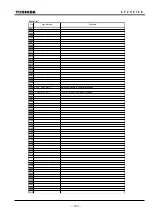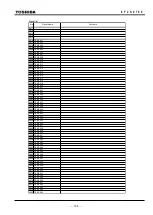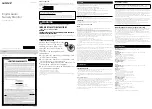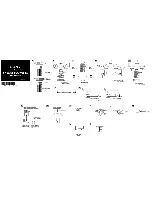
139
6
F
2
S
0
7
8
9
Replacing other modules
Open the right-side front panel (HMI module) by unscrewing the two binding screws
located on the left side of the panel.
Open the left-side front panel (blind panel) (*) by unscrewing the two binding screws located
on the right side of the panel.
(*) This panel is attached only to models assembled in the type B case.
Detach the module holding bar by unscrewing the binding screw located on the left side of the
bar.
Unplug the ribbon cable running among the modules by nipping the catch (in case of black
connector) and by pushing the catch outside (in case of gray connector) on the connector.
Pull out the module by pulling up or down the top and bottom levers.
Insert the replacement module in the reverse procedure.
After replacing the SPM module, input the user setting values again.
For failed module tracing and its replacement, see Appendix Q.
6.7.4 Resumption of Service
After replacing the failed module or repairing failed external circuits, take the following
procedures for the relay to restore the service.
Switch on the DC power supply and confirm that the "IN SERVICE" green LED is lit and the
"ALARM" red LED is not lit.
Note:
Supply DC power after checking that all the modules are in their original positions and the
ribbon cables are plugged in.
Supply the AC inputs and reconnect the trip outputs.
6.7.5 Storage
The spare relay or module should be stored in a dry and clean room. Based on IEC Standard
60255-6 the storage temperature should be
25
C to +70
C, but the temperature of 0
C to +40
C
is recommended for long-term storage.
Summary of Contents for GRT100 Series
Page 142: ... 141 6 F 2 S 0 7 8 9 Appendix A Block Diagram ...
Page 144: ... 143 6 F 2 S 0 7 8 9 Appendix B Signal List ...
Page 159: ... 158 6 F 2 S 0 7 8 9 ...
Page 160: ... 159 6 F 2 S 0 7 8 9 Appendix C Variable Timer List ...
Page 162: ... 161 6 F 2 S 0 7 8 9 Appendix D Binary Output Default Setting List ...
Page 165: ... 164 6 F 2 S 0 7 8 9 ...
Page 166: ... 165 6 F 2 S 0 7 8 9 Appendix E Details of Relay Menu and LCD and Button Operation ...
Page 174: ... 173 6 F 2 S 0 7 8 9 Appendix F Case Outline Flush Mount Type Rack Mount Type ...
Page 179: ... 178 6 F 2 S 0 7 8 9 ...
Page 180: ... 179 6 F 2 S 0 7 8 9 Appendix G External Connections ...
Page 185: ... 184 6 F 2 S 0 7 8 9 ...
Page 200: ... 199 6 F 2 S 0 7 8 9 ...
Page 201: ... 200 6 F 2 S 0 7 8 9 Appendix J Return Repair Form ...
Page 205: ... 204 6 F 2 S 0 7 8 9 Customer Name Company Name Address Telephone No Facsimile No Signature ...
Page 206: ... 205 6 F 2 S 0 7 8 9 ...
Page 207: ... 206 6 F 2 S 0 7 8 9 Appendix K Technical Data ...
Page 220: ... 219 6 F 2 S 0 7 8 9 ...
Page 221: ... 220 6 F 2 S 0 7 8 9 Appendix M Symbols Used in Scheme Logic ...
Page 224: ... 223 6 F 2 S 0 7 8 9 ...
Page 225: ... 224 6 F 2 S 0 7 8 9 Appendix N Implementation of Thermal Model to IEC60255 8 ...
Page 228: ... 227 6 F 2 S 0 7 8 9 ...
Page 229: ... 228 6 F 2 S 0 7 8 9 Appendix O IEC60870 5 103 Interoperability and Troubleshooting ...
Page 241: ... 240 6 F 2 S 0 7 8 9 Appendix P Modbus Interoperability ...
Page 255: ... 254 6 F 2 S 0 7 8 9 ...
Page 256: ... 255 6 F 2 S 0 7 8 9 Appendix Q Inverse Time Characteristics ...
Page 259: ... 258 6 F 2 S 0 7 8 9 ...
Page 260: ... 259 6 F 2 S 0 7 8 9 Appendix R Failed Module Tracing and Replacement ...
Page 266: ... 265 6 F 2 S 0 7 8 9 Appendix S Ordering ...
Page 269: ... 268 6 F 2 S 0 7 8 9 3 1 Oct 2 2017 Republished under spin off company ...
Page 270: ......
















































